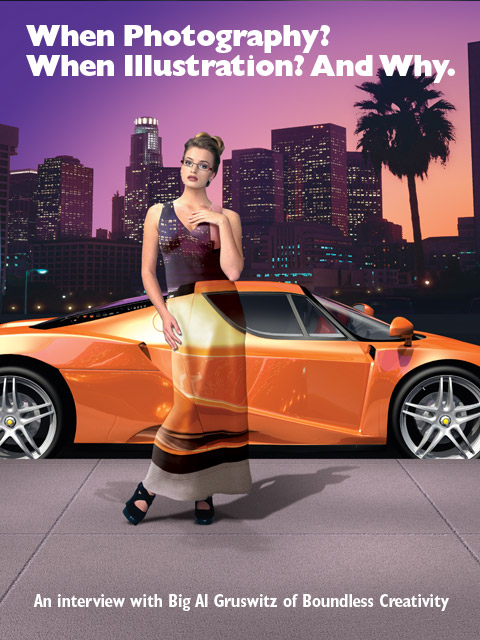
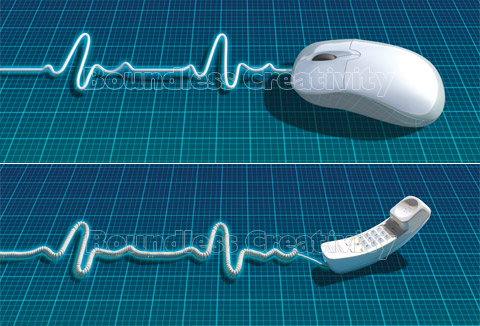
gX: Can you show us another example?
Big Al: Sure, here's another situation:
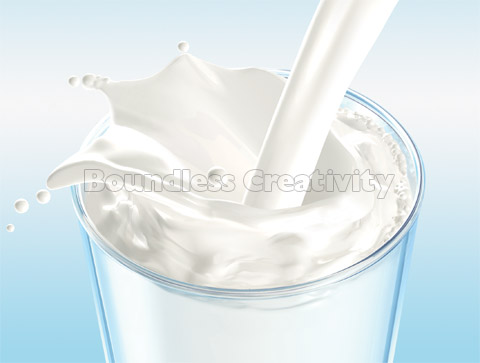
Big Al: It used to be a simple rule: "When you want to show reality, use photography. When you want to show something imaginary, use illustration." But if there's any rule that creative people follow, it's "Rules were made to be broken." When you look at a photo today, are you sure it IS a photo? Or might you actually be looking at a 3-D illustration?
The point is that the line is blurred today between what is real (photography) and what is realistic (3-D). However, there are still times when a concept is best executed in photography (new shoot or stock image), others when 3-D is the way to go, and still others where combining the two gets you the desired results. If you're an art director, your job is to know which is the right way to produce your concept in terms of communication of your idea, within your budget, and within your timetable.
gX: When is new photography appropriate?
Big Al: Obviously photography is the right choice if you're going for reality. Real people still look more real than 3-D models of people, but even with people, the line is getting blurred. The day is not far away when you won't know the difference. The cost factor is still in favor of photography when you want realistic people and complex realistic backgrounds such as this L.A. city street at night. However, for cost and timesaving, the woman was actually shot in a studio separate from the background. Both images were brought together in Adobe Photoshop.
gX: How about Stock Photography? There's so much to choose from today on line.
Big Al: Stock photos (especially royalty-free) are often a very economical solution. When you can't find exactly what you're looking for, you can come close and then modify with retouching. Take this photo of a man doing a belly flop into an empty swimming pool--this would be a costly photo shoot. You'd need a photographer and his crew, the male model in a bathing suit, a location where the owners would allow you to drain their pool, and you'd need some sort of rigging to suspend the man over the pool... plus retouching to remove the rigging. Instead, the art director purchased a stock photo where the man is jumping into a pool with water and then had the retoucher realistically illustrate the inside of an empty pool.
gX: How about 3-D illustration? Isn't it expensive and time consuming?
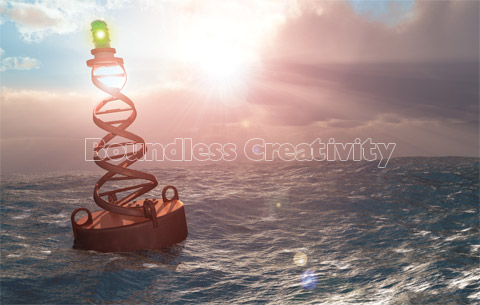
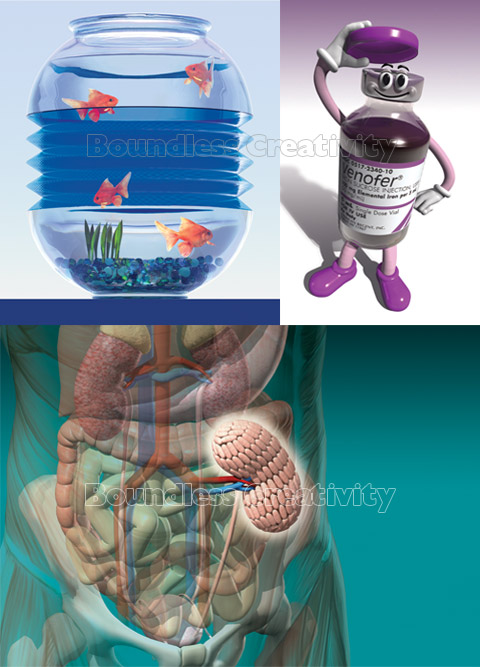
In many cases, you can turn to 3-D illustration almost interchangeably with photography. Think of 3-D production as a "virtual photography shoot". You have a scene (a location or studio background), a model and/or props), and a camera. There are 2 important elements that make or break the realism of a 3-D image: attention to detail and lighting--just like any photograph. Details matter too for factors like surface texture, atmosphere, and irregularities. You don't want it too perfect because life isn't perfect.
Details are important when it comes to constructing polygon models. However, realistic models of most common things already exist today and can be purchased for very little. A 3-D artist can buy a very realistic Coke* bottle polygon model for $39. For $680 they can get the entire interior of a convenience store--complete with actual labels on every product on every shelf and in every refrigerator case. There's even an ATM machine and cash register! It still takes a skilled artist to add textures and lighting that will make the model more realistic than as purchased.
*"Coke" is a Registered Trademark of the Coca-Cola Company.
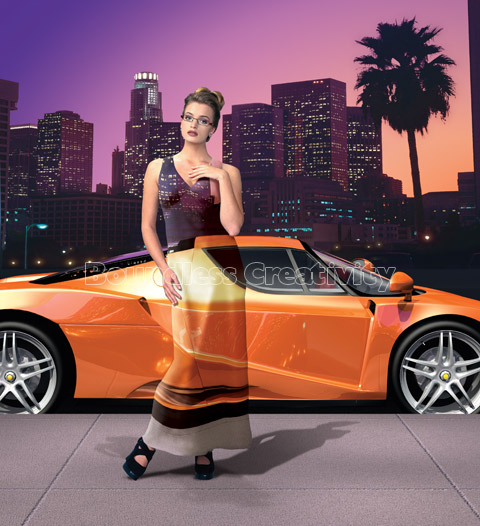
gX: I know you are sometimes asked to combine photography, retouching, and 3-D illustration, how well does that work?
Big Al: This image of a woman and a Ferrari was produced for a headline about "adapting to your environment."
The Production Solution: Separate stock photos of skyline of L.A. and woman are combined with a 3-D polygon model of a Ferrari Enzo that was purchased for $125.
Produced like a traditional studio photo shoot, the skyline is put on a wall behind the car model and lit; the woman is placed on an alpha plane (so she is silhouetted) and put in the scene on a prop sidewalk; the foreground scene is lit as if under a marquee; additionally, a copy of the skyline backdrop is placed behind the camera to reflect in the car finish. The image is rendered twice: 1st with the woman--for her shadows; and 2nd without her--to distort, in Photoshop to the shape of her dress. Then both highlights and shadows are added to give the appearance that the scene behind her is the print on the dress' fabric.
gX: So in summary, you'd say anything is possible.
Big Al: Basically, within your budget, as an art director you have many options. The more you know about what those options are, and how they are produced, the better an art director you will be--and the more impactful the advertising you produce. •
________________________________________________
Big Al Gruswitz of Boundless Creativity produced all images in this article. To see more of Al's work go to www.boundless-creativity.com.
Profile: Big Al has worked as an art director and associate creative director at a number of major agencies on both consumer and medical accounts including Saatchi & Saatchi, NY.
Since founding Boundless Creativity in 1994, he has specialized in realistic illustrations in both 3-D and 2-D as well as difficult photo retouching.